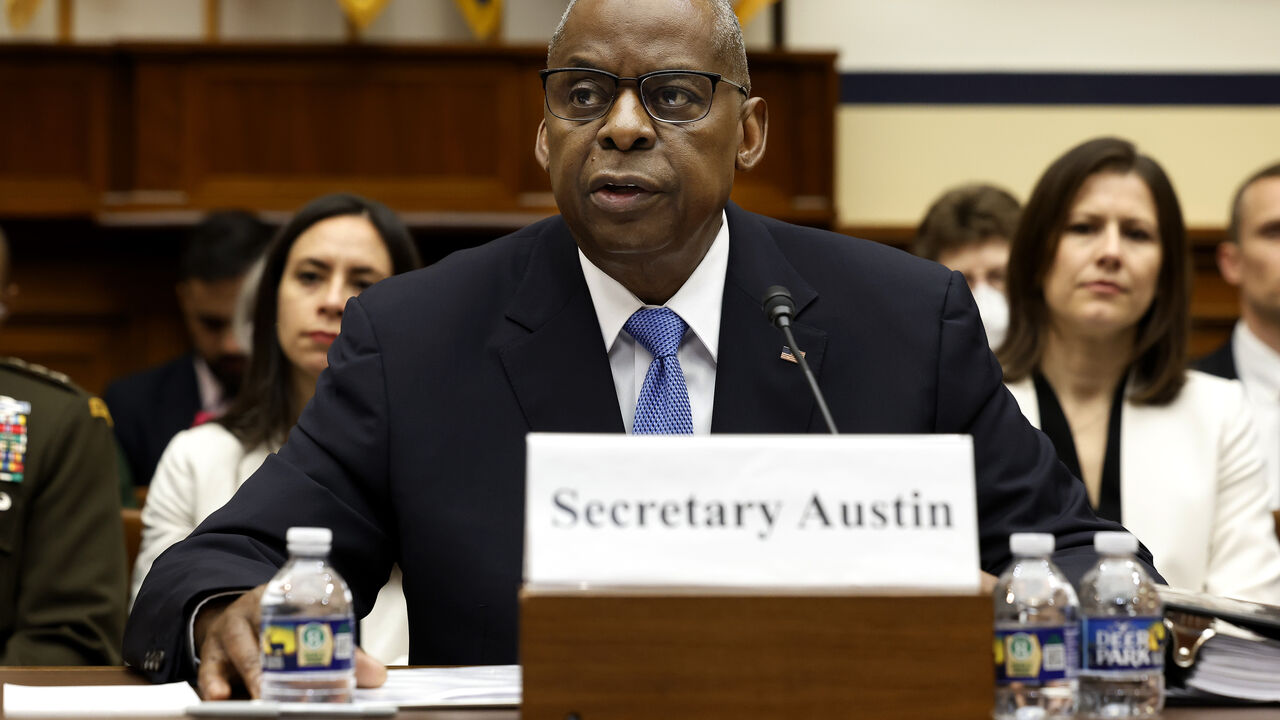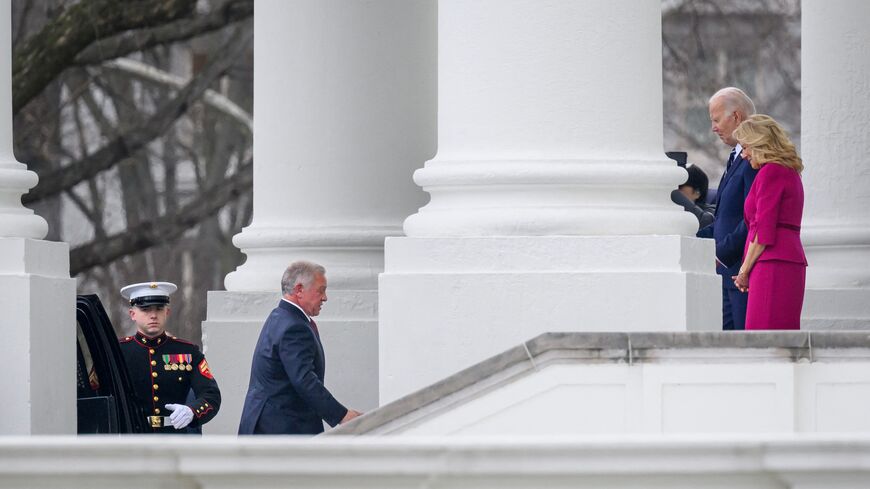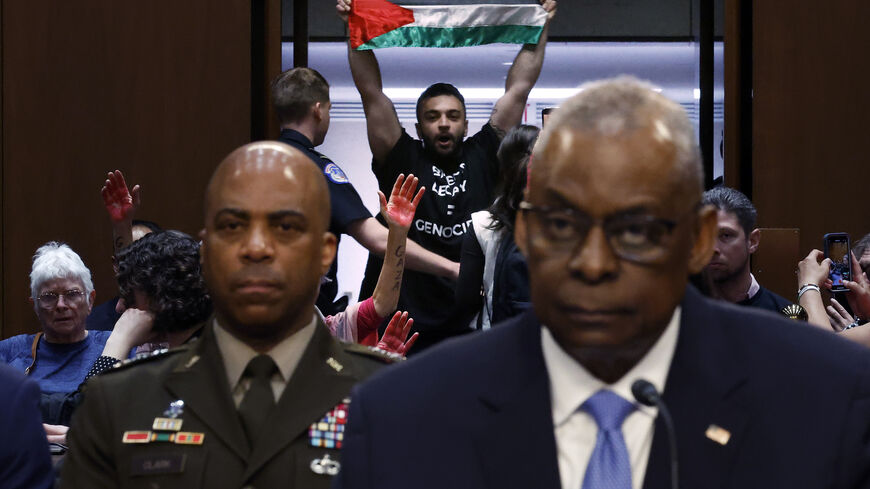Pentagon chief says US concerned over Israel's 'lack of execution' on Rafah evacuation plan
Hours after Netanyahu said Israel would launch an invasion of Rafah "with or without" a cease-fire deal, Pentagon chief Lloyd Austin sought to pump the brakes, telling House lawmakers that Israel has not fulfilled necessary steps to provide Rafah's civilians with a safe haven ahead of the expected incursion.

WASHINGTON – US Defense Secretary Lloyd Austin expressed concern to Congressional lawmakers on Tuesday that Israel is not moving fast enough to set up safe havens for civilians expected to be evacuated from Rafah ahead of an anticipated invasion.
Austin on Tuesday told members of the House Armed Services Committee that Israel has a plan to evacuate civilians from the southern Gaza enclave but said he remained concerned about “lack of execution.”
“They have a plan. The question is, can you execute — are you executing the plan, and how much time are you allocating for it?” Austin said in response to questioning from Rep. Ro Khanna (D-Calif.).
Earlier in the exchange, Austin answered in the affirmative when Khanna asked whether an evacuation of Rafah was “conceivable” and whether the US defense chief would hypothetically be able to come up with his own plan for such an operation.
“I could. But it takes time,” replied Austin, who, as four-star CENTCOM commander, oversaw the 2010 US withdrawal from Iraq.
Why it matters: Washington is withholding its green-light for an Israeli military invasion of Rafah until Israel takes further steps to prepare for the safe evacuation of the majority of the area’s civilian inhabitants.
An estimated 1.4 million people — more than half of the entire population of the Gaza Strip — remain crammed in Rafah near Gaza’s southern border with Egypt. The area has become a final refuge for those fleeing Israel’s massively destructive war against Hamas.
“If you’re going to conduct operations, then those civilians must be accounted for and hopefully moved out of the area,” Austin told House lawmakers on Tuesday.
“But thus far, we’re not seeing the civilians moved out of the battlespace,” he said.
Earlier on Tuesday, Israel’s prime minister, Benjamin Netanyahu, said an invasion of Rafah would go ahead regardless of whether last-ditch negotiations in Cairo result in a release of hostages and Palestinian prisoners in exchange for a proposed six-week truce.
“We will enter Rafah and we will eliminate Hamas’ battalions there — with or without a deal, to achieve the total victory,” Netanyahu said in a statement released by his office.
Evacuation plan: Israeli officials have agreed to broad US demands to enable the evacuation of civilians from Rafah before mounting an invasion of the area to pursue what remains of Hamas.
Austin said he has pressed top Israeli defense officials to approach the operation “sequentially.” The US defense chief has spoken with Israel’s defense minister, Yoav Gallant, more than 40 times since the conflict began last October.
Satellite imagery released last week suggested tents have been set up outside of Khan Younis and along a coastal area of Mawasi, but apparently far from enough to house anywhere near the 1.4 million civilians estimated to remain in Rafah.
“I doubt that they'll move all of them out. But certainly the preponderance of the people, sure,” Austin said, adding, “They can only go north.”
The US defense secretary has previously said he agrees with Israeli leaders’ objective of destroying what remains of Hamas, but top Biden administration officials are still demanding further details of the Israeli military’s plans to protect Rafah’s civilians, including specifics on how the IDF plans to arrange for their movement under protection and enable provisions of shelter and aid once the civilians arrive at safe zones.
“I’ve seen them put some things in place,” Austin told lawmakers on Tuesday. “But … there’s a lot more that needs to be done before we can say that they’ve accounted for the civilians and taken care of [them].”
What’s next: Biden’s national security adviser, Jake Sullivan, last week said he still expects to discuss Israel’s plans for Rafah in person with Israel’s national security adviser, Tzachi Hanegbi, and strategic affairs minister Ron Dermer.
The anticipated Dermer-Hanegbi delegation to Washington — requested by President Joe Biden back in mid-March — has been postponed at least twice, once by Netanyahu himself and later by a massive Iranian counterattack against Israel that was thwarted with the help of the United States, as well as European and Arab states.
“The Israelis have shared some of their thinking in terms of what a Rafah operation could look like,” Pentagon press secretary Maj. Gen. Patrick Ryder told reporters last Thursday.
“At the highest levels, Israeli officials and US officials will continue having those conversations,” Ryder said.
Know more: The US military has begun constructing a temporary pier off Gaza’s coast — a key part of Washington’s plan to bypass Israel’s obstruction of humanitarian aid shipments into Gaza as the enclave faces imminent famine.
The UN's humanitarian aid chief Martin Griffiths issued a statement on Thursday welcoming the initiative, but warned that a rise in humanitarian deliveries into Gaza "cannot be used to prepare for or justify a full-blown military assault on Rafah."
"The simplest truth is that a ground operation in Rafah will be nothing short of a tragedy beyond words. No humanitarian plan can counter that. The rest is detail," Griffiths' statement read.
Biden has vowed that no American troops will go ashore as part of the humanitarian port plan, and Pentagon officials insist that remains the case. Instead, the Israeli army, navy and air force will patrol an integrated buffer zone around the humanitarian port as American military personnel ferry aid trucks to the pier.
Yet aid organizations have expressed significant concerns about working directly with the Israeli military on the project. UN experts have accused the IDF of repeatedly opening fire on aid convoys, most visibly in the April 1 triple-tap Israeli drone strike on a World Central Kitchen food charity convoy, which killed seven aid workers.
Earlier this month, the White House said it expected to see the IDF take "concrete steps" to increase the flow of aid and protect civilian aid workers.
While US officials say the flow of cross-border aid has increased, UN officials have said it's still not enough. Humanitarian agencies also continue to have concerns over the IDF's targeting and strike approval processes, and want to see signs of institutional changes, an official speaking not for attribution told Al-Monitor.
The US military has established a coordination cell with the IDF at Hatzor Airbase near Ashdod to coordinate on deconfliction to protect US troops and civilian aid workers, a senior US defense official said last week. The US side of the cell is overseen by a two-star American general.
"We are confident that we have a good deconfliction process set up," Pentagon deputy press secretary Sabrina Singh told reporters on Monday. "So we are confident that we are in a good place," she said.
Al-Monitor asked the Pentagon’s top general, Chairman of the Joint Chiefs of Staff USAF Gen. CQ Brown, during a press conference last week whether he had reviewed CENTCOM's plans for joint US-IDF security around the pier – and whether he was confident in that plan.
“I am,” Brown replied.






